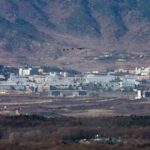
China has recently imposed military pressure on Taiwan, including setting up seven no-fly zones. Still, analysts suggest Beijing is refraining from making official statements to avoid provoking conflicts with the second Trump administration.
According to Taiwanese media, including Liberty Times and United Daily News, a Taiwanese national security official noted that China’s recent pressure campaign represents the largest maritime military movement since the Third Taiwan Strait Crisis in 1996, which aimed to block the election of pro-DPP candidate Lee Teng-hui in Taiwan’s first direct presidential election.
The official explained that this operation’s scale surpasses the 2024 Joint Sharp Sword drills, which simulated Taiwan’s encirclement, and the military exercises conducted in August 2022 following then-U.S. House Speaker Nancy Pelosi’s visit to Taiwan.
However, the official added that China has not formally announced these activities as drills for several reasons: maintaining the appearance of peace ahead of the U.S. Trump administration’s second term starting in January 2025, upcoming united front strategy events like the Taipei-Shanghai City Forum, missing the optimal training window due to adverse weather conditions, and internal disruptions caused by the dismissal of Miao Hua, the fifth-ranking member of China’s Central Military Commission.
Another source suggested that China’s deployment of such significant military resources likely required approximately 70 days of preparation. This individual argued that Taiwanese President Lai Ching-te’s South Pacific tour is merely an excuse and that China’s actions aim to exert strategic pressure on a U.S. government transitioning to a new administration. The source also noted that China is extending its pressure campaign to other nations, including South Korea, Japan, the Philippines, and South Pacific countries.
On Monday, Taiwan’s military stated that China had designated seven no-fly zones off the eastern Zhejiang Province and southeastern Fujian Province, which faces Taiwan, and deployed approximately 90 vessels near Taiwan, including 60 naval ships and 30 coast guard vessels. Taiwan characterized these actions as gray zone provocations, heightening its alert to the highest level and conducting response drills.
In response, Zhu Fenglian, spokesperson for China’s Taiwan Affairs Office of the State Council, stated at a regular briefing, “We are closely monitoring ‘Taiwan independence’ separatist forces collaborating with external forces to provoke independence efforts, and we will never tolerate such actions. We are committed to safeguarding peace and stability in the Taiwan Strait and ensuring the fundamental interests of people across the Strait.”
Meanwhile, Taiwan’s Ministry of National Defense reported that between 6 a.m. Tuesday and 6 a.m. Wednesday, it detected 53 Chinese military aircraft, 11 naval vessels, and 8 civilian service ships operating in airspace and waters near Taiwan. Among them, 23 aircraft crossed the Taiwan Strait median line into northern, southwestern, and eastern airspace. Local media reported that Taiwan’s military plans to conduct the Lian Yong live-fire joint exercises starting Wednesday night to prepare for a potential Chinese invasion.















Most Commented